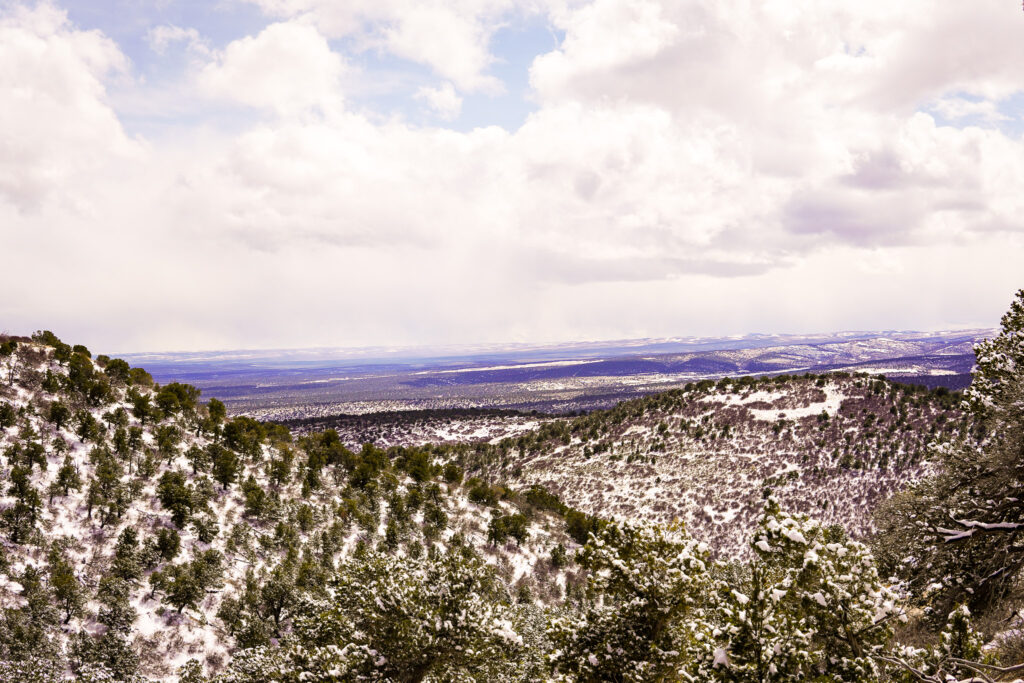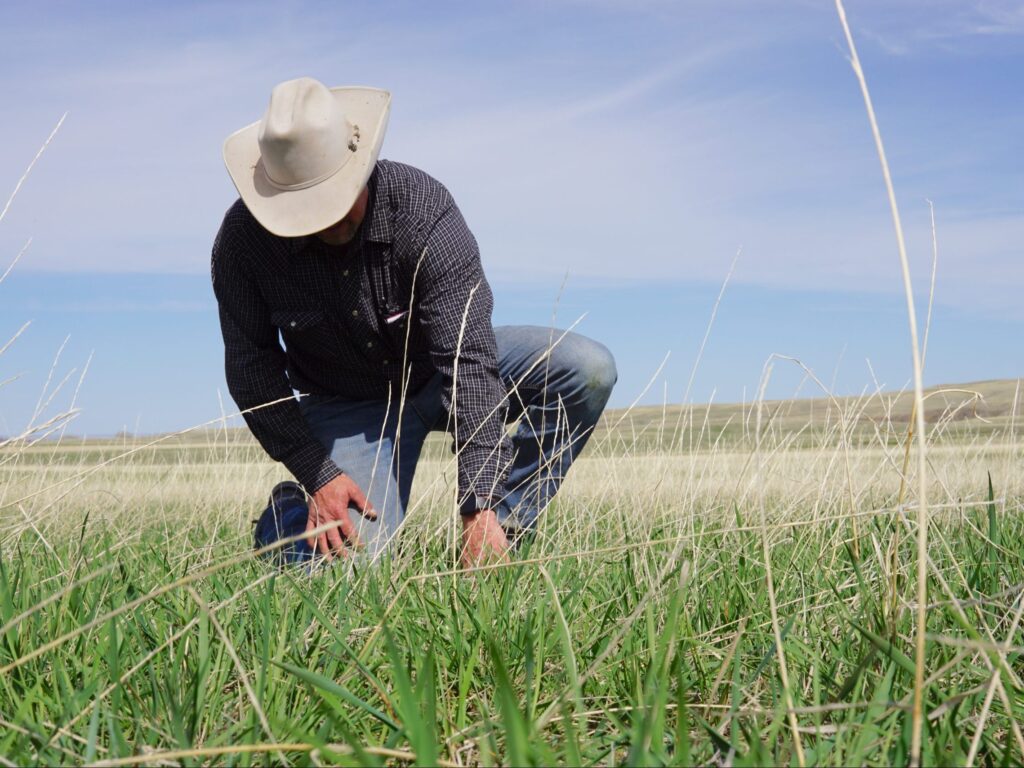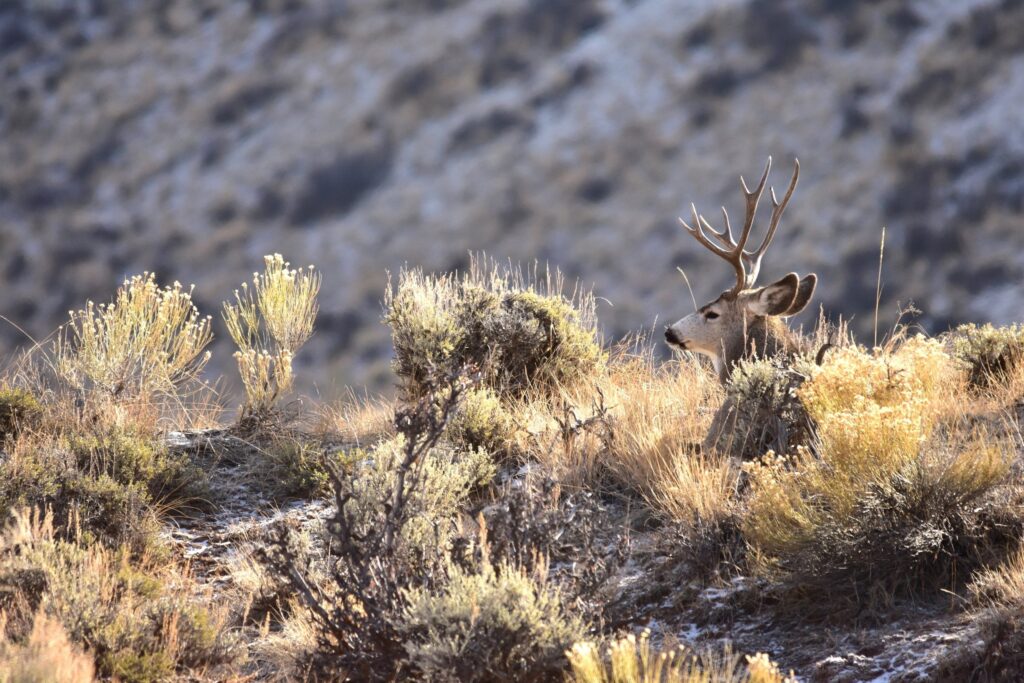
Big Game Migration
Increasing Habitat Connectivity for Wildlife
The wide open spaces of the American West are home to some of the last great animal migrations in the world.
The people living and working in these places experience a front row seat to the show, particularly when it comes to big game migration. In their backyards and on public lands, mule deer, elk, and pronghorn move every year from higher-elevation forage areas in the summer, to their more sheltered lower-elevation winter habitat—a back-and-forth trek that may be over 100 miles long for some.
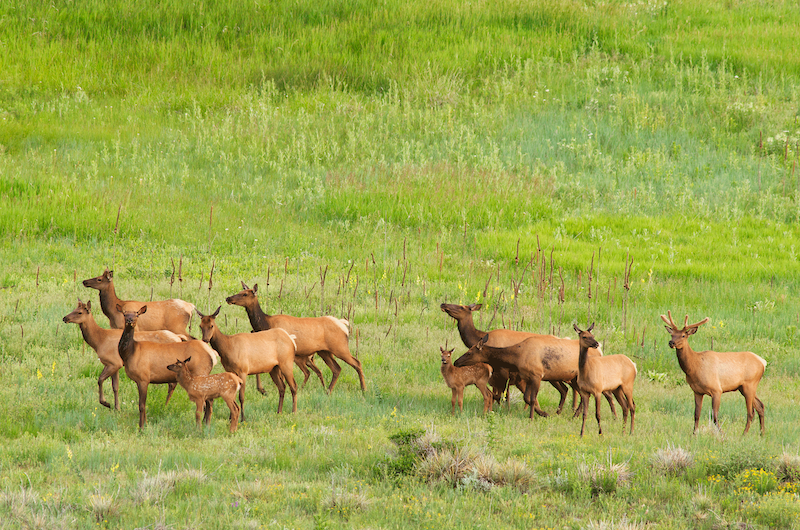
Many of these animals learn their migration routes generationally, and some routes remain unchanged for millennia. But infrastructure, invasive species, and other pressures are degrading and fragmenting seasonal habitat and migration corridors, presenting major threats these iconic species.
Through our habitat work across both public and private land ownerships, the Intermountain West Joint Venture (IWJV) is committed to ensuring healthy and well-connected habitat for big game. Habitat connectivity supports myriad wildlife, and many big game migration corridors overlap important connectivity areas for birds like greater sage-grouse. We strive to support state wildlife organizations and federal land management agencies who are key to maintaining these prospering wildlife herds and healthy functioning habitats. We support these efforts not only for the well-being of big game across the West, but for the well-being of entire natural systems and the people that depend on them.
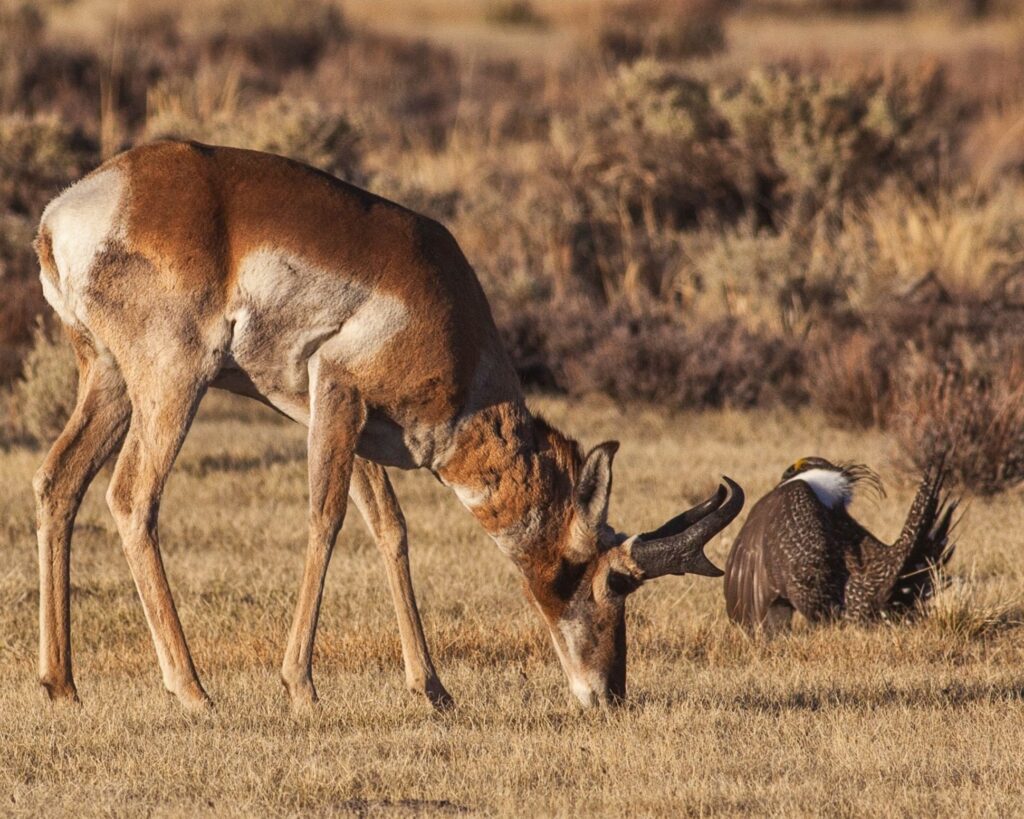
sCIENCE SPOTLIGHT: Why conserve big game habitat?
As one of the Migratory Bird Joint Ventures established by the North American Waterfowl Management Plan, the IWJV is tasked with working to conserve bird habitat across the American West. Why, then, are we concerned with supporting habitat for big game?
Habitat that is healthy, intact, and interconnected is important for all wildlife within sagebrush rangelands. This is especially true for species that migrate seasonally, like big game and greater sage-grouse.
Studies show that habitat conservation targeted at greater sage-grouse habitat often incidentally protects important mule deer and pronghorn winter habitat and migration corridors. Conversely, conserving big game habitat also conserves habitat for many upland bird species. These species all rely on healthy, intact sagebrush habitat—which today is found across a mosaic of public and privately owned land. Collaborative sagebrush rangelands habitat enhancement across ownership boundaries benefits all species that rely on sagebrush rangelands, including birds.
putting science into practice
At the IWJV we focus our big game migration work on these key areas:
Fencing Infrastructure Improvements
The IWJV’s approach is rooted in working across fence lines to conserve habitat. Fences are essential for managing livestock and defining property, but they can pose a problem for wildlife following migration routes that are bisected by this infrastructure. Updating existing fences to be wildlife-friendly in key locations permits wildlife to traverse boundaries without harm. And virtual fencing is quickly becoming a popular method to control livestock movement without building or replacing physical fences at all—an emerging technology with exciting potential for many livestock managers.
Cross-Boundary Facilitation
Durable habitat improvement work relies on forging productive partnerships with many stakeholders and rightsholders within localized communities. The modern West is a mosaic of lands stewarded by federal, state, and local agencies; private businesses and families; Tribes; non-governmental organizations; and others. By working together across these lines on a map, we are able to get more done for communities and wildlife throughout the sagebrush biome.
Habitat Improvement
Durable habitat improvement work relies on forging productive partnerships with many stakeholders and rightsholders within localized communities. The modern West is a mosaic of lands stewarded by federal, state, and local agencies; private businesses and families; Tribes; non-governmental organizations; and others. By working together across these lines on a map, we are able to get more done for communities and wildlife throughout the sagebrush biome.
Partnership in Action
Conservation Success Story
Partners in North Central Montana Leverage RCPP for Conservation
Conservation Success Story
A River of Elk Flows Through Heaven
SUPPORTING SCIENCE & RESOURCES
State Policy & Funding
WAFWA Resource on SO 3362
Secretarial Order 3362, “Improving Habitat Quality in Western Big Game Winter Range and Migration Corridors,” coordinates the efforts of Western states to manage big game species.
WAFWA Wildlife Movement and Connectivity Initiative
WAFWA initiative enabling collaborative work in partnership with federal agencies, non-government organizations, tribes, and private landowners to restore and enhance big game migration habitat.
WAFWA Wildlife Movement & Migration Committee
Working group of state and provincial fish and wildlife agency personnel to foster collaboration on wildlife movement and migration.
Sample SO 3362 State Action Plans
Colorado Big Game Action Plan (2024)
New Mexico State Action Plan (2024)
Wyoming State Action Plan (2024)
National Policy & Funding
WAFWA’s State Plan Resource
State-specific action plans guide the implementation of Secretarial Order 3362 across 11 western states. For more state action plans, visit the link below.
USDA Migratory Big Game Initiative
In 2024 USDA expanded investments in big game conservation, opening funding opportunities for agricultural producers and landowners via NRCS’s Agricultural Conservation Easement, Environmental Quality Incentives, and Grassland Conservation Reserve Programs.
WLFW on USDA’s Migratory Big Game Initiative
This resource from Working Lands for Wildlife provides more information and insight into USDA’s big game conservation investments and opportunities for landowners and agricultural producers.
Wildlife-Friendly Fencing
NFWF Western Big Game Seasonal Habitat and Migration Corridors Fund
Aims to conserve critical winter range and migration corridors to maintain healthy populations of pronghorn, elk and mule deer, and the phenomenon of big game migration across 11 western states.
A Landowner’s Guide to Wildlife Friendly Fences
This resource from Montana Fish, Wildlife, & Parks has extensive information on the design of wildlife friendly fences for landowners.
NRCS Conservation Practice Standards on Fences
Official NRCS documents on construction and conservation management implications of fencing.
Big Game Migration Corridor Maps
USGS Corridor Mapping Team: Ungulate Migrations of the West
Latest print-based compendium of USGS migration corridor and habitat use mapping for deer, elk, and pronghorn populations throughout the Western US, and accompanying resources
Western Migrations Wildlife Corridors and Route Viewer
USGS maps of ungulate migration corridors, routes, stopovers and ranges overlaid on maps that describe land cover and land management, with shapefile upload capacity.
Migration Mapper
A powerful data engine from Wyoming Migration Initiative that provides comprehensive analyses of game migration GPS collar data, including movement modeling, population use, corridor estimation, and map visualization.
